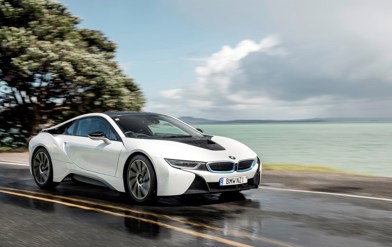Small and quirky it may be, but there’s something oddly appealing about the Nissan Juke. I, like many, recoiled at the first gen model, with its bulbous, round, ugly face, but over the years, grew to like it – or maybe hate it less. And when Nissan built the Juke R, I thought hell yeah!: a Juke with GT-R running gear was almost a dream car, maybe even something I’d swap my Pulsar GTI-R for. Then I saw that Nissan just built five of them, for $1m. Think I’ll keep my GTI-R…

While I woke from the Juke R dream, I have recently been more tolerant of the Juke as a whole, embracing even. Then in 2020, Nissan launched the latest model Juke, and eyes were widened still.
As the smallest SUV in the range, Juke is also the cheapest way into a Nissan in NZ, starting at $32,490 for the ST, up to $38,750 for the mid-range ST-L and topping out with the Ti at $44,990. That’s hefty, because it eclipses the larger Ti Qashqai by $2k, and even the second-to-top X-Trail by $1k!

On paper, that’s a hard sell for the quirky small Juke, but maybe the drive makes up for it... All three models run the same 1.0-litre twin-cam turbo three-cylinder engine and seven-speed automatic gearbox. With a modest 84kW and 180Nm, at least its light weight offers a dynamic package… except it doesn’t. Its 1274kg is well short of a Patrol, but when a Suzuki Vitara Turbo is 1095kg, with 22 percent more power and torque, and significantly faster, the Juke just fades away into the background.
Yes, that issue of speed: it’s a compact SUV, of course, so there’s no expectation of drag races, but in the movie Horrible Bosses, Jason Bateman’s character, Nick, when being interrogated by police for speeding in his Toyota Prius, says ‘I don’t win a lot”. The Juke is much the same: at DRIVEN we generally use the 10-second 0-100km/h barrier as the difference between an accepted barrier for adequate performance for safe overtaking, acceleration and just general happiness – anything above 10 starts to get tedious. Anything 11 or above should have other appealing traits, such as character, purpose or extreme fuel economy. A typical dual cab ute, for example, manages it in the 10-second range.

The top-spec Juke Ti, on its big, stylish (but admittedly speed-blunting) 19-inch wheels, can’t do better than 11.5 seconds to 100km/h, and even more concerning, its 0-60km/h time of 4.7 seconds is slower than a Hilux, for example, by half-a-second. Its quarter-mile of 17.9 @ 124km/h makes motorway on-ramps the Juke’s worst enemy. There is, however, a Drive Mode switch near the shifter that when put into sports mode unleashes another 100kW/100Nm and makes it as quick as a GT-R… OK, not quite, but it does change the throttle response and shift points and take the Juke from lazy and unresponsive to at least bearable; Sport mode should be the default to minimize driving frustration. It quickly was for our week-long drive.

Big deal, you may say? Sure, but when putting around the suburbs, darting from side street to main road or just doing general duties, it’s just not fast enough. And because it needs such a stirring, we didn’t get close to its claim of 5.8l/100km; around 7-8 was our norm. And the kick in the groin is its demand for 95 octane fuel. Ouch.
We don’t mean to hate on the Juke, because there are some really appealing parts, and the interior has to be the stand-out, and where it really shows where the money might have gone. In the Ti, leather seats and steering wheel, radar cruise and a functional, sublime interior proves rather appealing, especially with the swathes of Alcantara patched throughout the cabin, along with tasteful patches of fake carbon fibre plastic, and a full eight-speaker Bose Personal Plus audio system with speakers in the headrests.

Not forgetting the basket full of tech and safety goodies, from auto braking to lane keep assistance and auto high beams and tyre pressure monitoring.
Even the rear seat is fine, comfortable without being too spacious – this is a compact SUV, of course, so space and size is typical of the segment. The boot is sunken, which can be both good or bad depending on the need or use, offering a little more depth and cubic storage without the appeal of flat loading.

We did, however, have a nasty accident with the rear parcel shelf, with Mrs Evans reaching down to grab the shopping, and knocking her forehead on the edge of the lifted parcel shelf. A shelf with rather sharp edges, which gave her a nasty cut.

The new Juke wants to be loved, but in a few areas it does itself no favours. From the highs of an almost GT-R-like interior, to the lows of performance, price and a blood-thirsty parcel shelf, the biggest hurdle the Juke needs to overcome in 2021 isn’t about it looks, but that the 18cm longer Quasqai is a bigger, better and – as sales charts have proven – more popular SUV option in the Nissan range.
2020 Nissan Juke Ti
ENGINE: 1.0-litre petrol turbo three-cyl
POWER: 84kW/180Nm
GEARBOX: Seven-speed auto, FWD
ECONOMY: 5.8L/100km
PRICE: $44,990

















